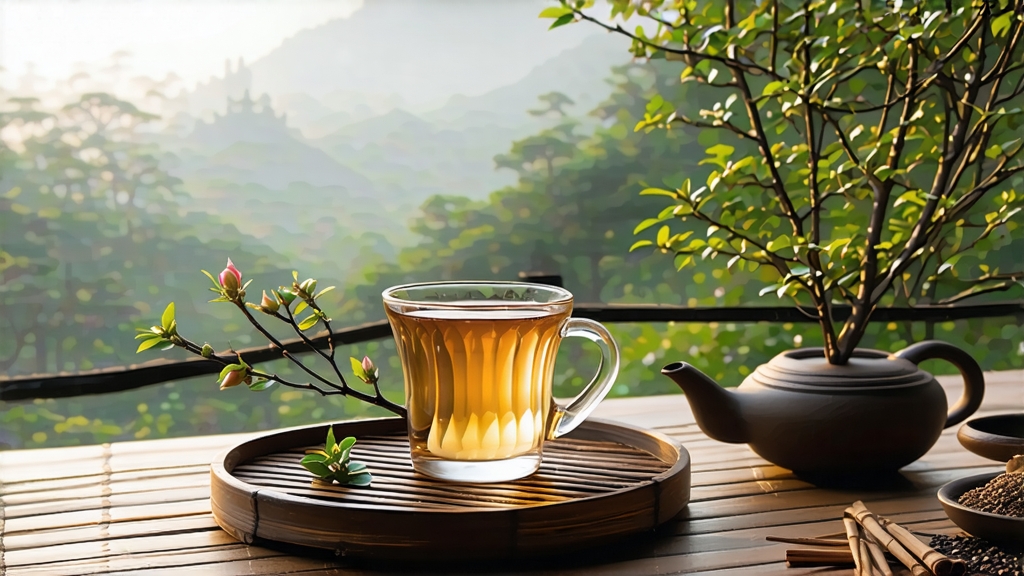
If green tea is the youthful burst of spring and pu-erh the wise elder of the tea world, then Fuding Silver Needle—Bai Hao Yin Zhen in Mandarin—must be the moonlight that lingers after the guests have gone: pale, fragrant, and insistently memorable. Produced only in the coastal hills of Fuding and Zhenghe in Fujian province, this most aristocratic of Chinese white teas is harvested for only a few April mornings each year, when the air is still cool enough to keep the buds closed tight as secrets. Pickers take only the unopened leaf shoot, the pekoe-rich tip that looks like a silver stylus, hence the evocative English name. One pound demands more than thirty thousand such tips, all plucked by thumbnail before the sun climbs high enough to warm their downy surface. The result is a liquor so translucent that poets have likened it to “liquid jade caught at dawn,” yet so aromatic that a single gaiwan can perfume an entire room.
History whispers rather than shouts here. Unlike the Tang dynasty brick teas carried on yak caravans or the Song dynasty powdered whisked teas of imperial contests, Silver Needle enters the written record only in the late 18th century, when a Fuding magistrate presented it to the Qianlong Emperor. Court chronicles praise its “cooling nature,” recommending it for dispelling summer heat and inner fire; folk memory claims it was once pressed into small silver ingots and used as currency by tea merchants who trusted its value more than minted metal. Whatever the legend, the tea’s reputation grew slowly, eclipsed by the faster commerce of oolong and black teas until the 1890s, when European ports first recorded shipments labeled “Pekoe Souchong White.” Even then, only a few crates arrived in London and St. Petersburg, where ladies of fashion adopted it as a slimming tonic. The true renaissance came after 2005, when Chinese white teas were rediscovered by domestic connoisseurs and prices for pre-1990 cakes rose faster than Bordeaux futures.
The plant itself is a landrace of Camellia sinensis var. sinensis known locally as Da Bai Hao, “Big White Down.” Its leaves are broader and paler than those of the Dragon Well cultivar, and the buds can exceed two centimeters, fat with amino acids that later translate into sweetness. Gardens sit between 200 and 800 meters on lateritic red soil strewn with weathered granite; the nearby East China Sea moderates temperature, draping the hills in a marine fog that slows photosynthesis and concentrates fragrant compounds. Farmers still intercrop mountain peaches and loquats whose roots share mycorrhizal networks with the tea bushes, a polyculture said to lend a faint orchard note to the finished leaf.
Processing Silver Needle is an exercise in restraint. Once picked, the buds are spread one layer thick on bamboo trays and left to wither for thirty-six to forty-eight hours, depending on humidity. No pan-firing, no rolling, no shaking—only the gentle kiss of air and the skill of the withering master who decides when to move trays into shade or stack them closer to capture warmth. The goal is a moisture reduction to about five percent while preserving the oxidase enzymes intact; oxidation happens spontaneously but slowly, reaching perhaps five to seven percent—just enough to round the edges yet stop short of the leafy bite found in green tea. Finally, the tea is baked for minutes, not hours, at temperatures below 60 °C, locking in a downy appearance that feels like stroking a kitten’s ear.
Such minimalism demands fanatical cleanliness. Workers wear cotton gloves to keep fingerprints from bruising the buds; windows are screened against insects whose carcasses could add unintended protein to the cup. Even moonlight is factored into the schedule: traditionalists prefer withering under clear night skies because lunar radiation, they claim, encourages a cooler, sweeter end cup. Modern scientists remain skeptical, yet spectral analysis shows higher levels of linalool and geraniol in night-withered lots—aromatic molecules that amplify the tea’s signature honeysuckle note.
To brew Silver Needle is to practice the art of waiting. Begin with soft water brought to 80 °C; anything hotter scalds the down and releases tannic harshness. Measure three grams—about two heaping teaspoons—for every 150 milliliters of water. A tall